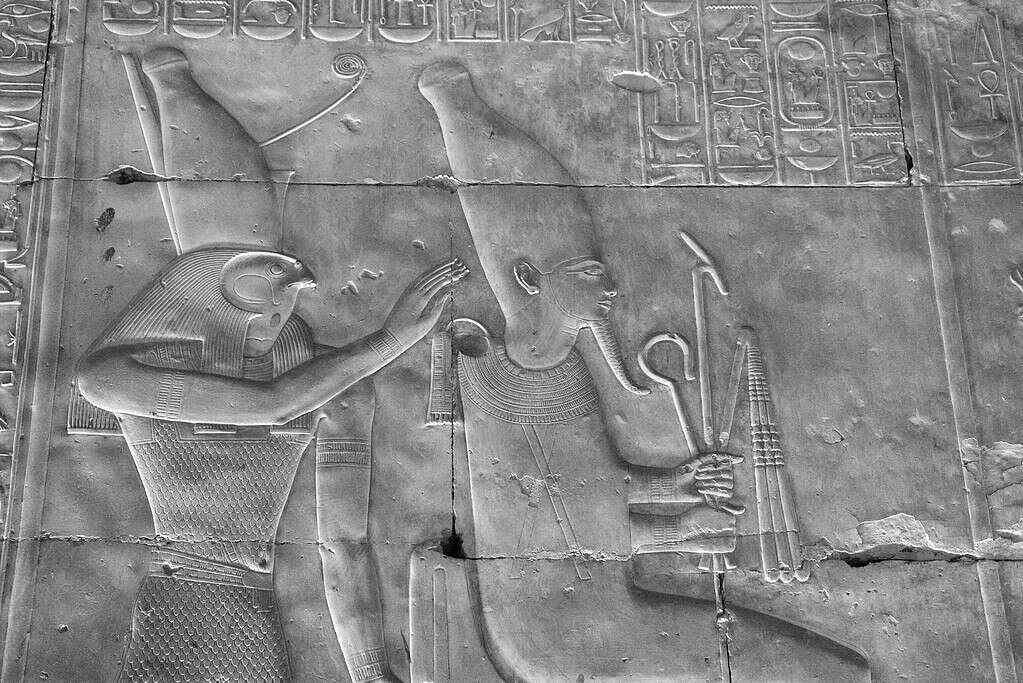Did scientists really discover the tomb of Osiris? Not really. The tomb of Osiris has been “discovered” a few times over the last few years. The latest headlines in 2023 and 2022, aided by social media, continue the trend. Did Osiris really need so many resting places, or is something less exciting going on? In 2022, news spread quickly that the tomb of the Egyptian god had been found. Conspiracy theories and prophecies of doom followed quickly after.
In short, scientists did not discover the tomb of the Egyptian god Osiris. Recent videos and posts about any such discovery are actually footage and images of other temples and excavations. Most of them have nothing to do with Osiris or tombs. But with all lies, there is always a grain of truth, which is why this video might have been so convincing to so many people. Some of the footage and information in these misleading posts are actually from places known as the “tomb of Osiris.” And, even though there was no god buried in these places, their history is no less fascinating.
But why does this story gain so much attention each time it is shared online? Here’s the truth behind the discovery of the tomb of Osiris.
The Latest Video of The Discovery

Nile river in Egypt. The purported location of the Tomb of Osiris.
©iStock.com/glowonconcept
In 2022, a video claiming to show evidence of the discovery of the tomb of Osiris went viral. However, this video shows clips of earlier discoveries, none of which are tombs that held the mythical body of Osiris. The video’s creator took footage from other Egyptian sites and stitched them together to create the impression that this was a new discovery of an actual tomb of an Egyptian god. They also included misleading information with the images to deceive their audience. There is no date or scholarly information provided with the video or the posts.
Egyptologists said the video combines footage and images of sites and temples and excavations from all over Egypt. They say there is absolutely nothing accurate in the entirety of the video.
Any actual discovery of a tomb of Osiris would be announced by the institution that made or funded the excavation, and would be accompanied by information about the site. The information would be hosted on a reputable website. The find would be verified and studied by scientists from several institutions. And, in the case of Egyptology, the Egyptian government would also get involved in verifying and protecting the site. None of these are true about the discovery announced in these posts in 2022 and 2023.
What probably made the video especially convincing, though, was the fact that it included footage from a discovery in 2015 of a replica tomb of Osiris in Luxor, Egypt, along with images of the discovery of the “original” tomb of Osiris in 1999.
The Actual Tombs of Osiris

The Osireion at the Temple of Pharaoh Seti I at Abydos. Other tombs of Osiris are based on this construction.
©Ibrahim Hamroush/iStock via Getty Images
Archaeologists discovered the replica tomb in 2015. Scholars say the chamber was built in order to be an earthly representation of what Osiris’ tomb was in mythology. It is a 3,200-year-old reproduction, not an actual tomb, located on the west bank of Thebes. It is a smaller version of a tomb complex at the Osireion built by Pharaoh Seti I in Abydos, Luxor. Seti I likely built the tomb around 760–656 BCE. It contained no sarcophagus and no godly remains.
The second tomb included in the video is the Osiris tomb discovered in 1999. The builders constructed that tomb in the likeness of what they thought Osiris’ tomb actually looked like. It mimics the Osireion at Abydos, which is yet another tomb dedicated to Osiris. It included a statue of Osiris, and even had a hole that archaeologists called the “Osiris shaft” that led down to an empty granite sarcophagus that never actually held any human remains (Let alone the remains of a god).
Researchers knew of the existence of the tomb for many years, but did not excavate the underground structure due to debris and flood waters.
The structure is located between the Sphinx and the Pyramid of Chefren. It is made up of three levels, with the ceremonial, symbolic sarcophagus on the lowest level. Egyptians built it during the 5th century BCE.
What are the tombs?
The misleading videos used both of these locations and claimed they were the same location of the real god Osiris. However, researchers maintain that neither of these chambers ever held any remains of any kind. In fact, the chapels in which the statues of Osiris were found were most likely used for cult purposes dedicated to the worship of Osiris. Other chambers connected to the tombs would have held other remains of notable people, or used for storage or transportation.
Egyptians constructed these tomb chambers to resemble the judgement hall where Osiris sits to pronounce punishment or reward on the spirits of those who died. According to legend, those who lived a good life would be accepted into Osiris’ heavenly kingdom. Osiris would then cast those who did evil to the demon Ammit. The demon alligator would destroy their souls forever. Recreating this judgment hall would have been a strong reminder to the people in the chamber to act and live morally righteous lives.
Who is Osiris, Anyway?

Raised relief, or bas relief, depicting Osiris and his son, the falcon god Horus. Osiris wears the white crown (or Hedjet) of Upper Egypt.
©TerryJLawrence/iStock via Getty Images
According to Egyptian tradition, Osiris is the god of life, fertility, the afterlife, agriculture, the dead, resurrection, and vegetation. He was the first pharaoh of Egypt and was worshipped for thousands of years until the spread of Christianity with the Roman Empire.
He is typically depicted with the signs of the office of the pharaoh, wrapped like a mummy, and with green skin. This is because, according to myth, he was killed by his brother Set and cut into many pieces that were scattered all over Egypt. Isis, his wife, then collected the pieces and put them back together to reconstruct his body. Osiris came back to life, but retained the green color of death and rot.
This also explains why there are so many tombs for Osiris all over Egypt. Each one could have been representative of a resting place of one of the many pieces of Osiris that were scattered over the land. Isis erected a shrine in each place where she found a piece of Osiris. The Egyptians, in honor of this effort, clearly did the same.
So, Why Would People Care if We Found the Tomb of Osiris?

A typical depiction of Osiris sitting on his throne. A Scene from the tomb of Nefertari.
©Ibrahim Hamroush/iStock via Getty Images
There are no prophecies or myths about the return of Osiris. After his resurrection, he reigned over the underworld and sat in judgment over those who died. Egyptians built his tomb shrines deep underground, close to the underworld. This probably contributes to why are so well preserved when compared to other shrines built on the surface.
Osiris remains one of the most well-known and influential gods in Egyptian mythology, so finding anything associated with him, especially if it is a tomb built in his honor, is always going to be big news.
In the end, people love ancient mythology, archaeology, and big news. Combining all three of these in a sensational video and spreading it online is simply easier today than it was in the past. A little bit of research and fact-checking will go a long way when you watch or read something that simply feels too fantastic to be real. There are plenty of resources you can use to help you stay knowledgeable (and not embarrass yourself online!). These include sites like the Associated Press or Snopes, which actively fact-check stories and claims online. Other online encyclopedias regularly update their information with recent news and discoveries. Chances are if you want to check if something is real or not, you’ll find the information you need there.
Thank you for reading! Have some feedback for us? Contact the AZ Animals editorial team.








